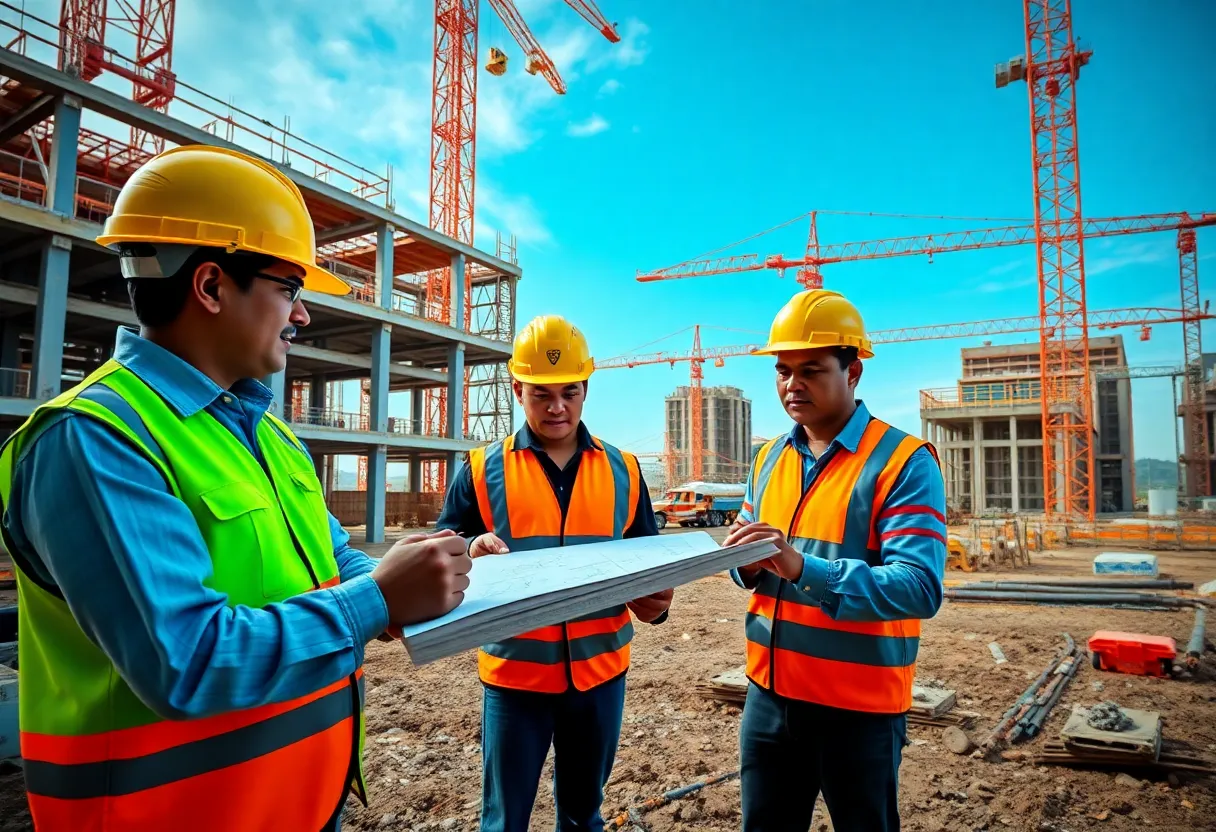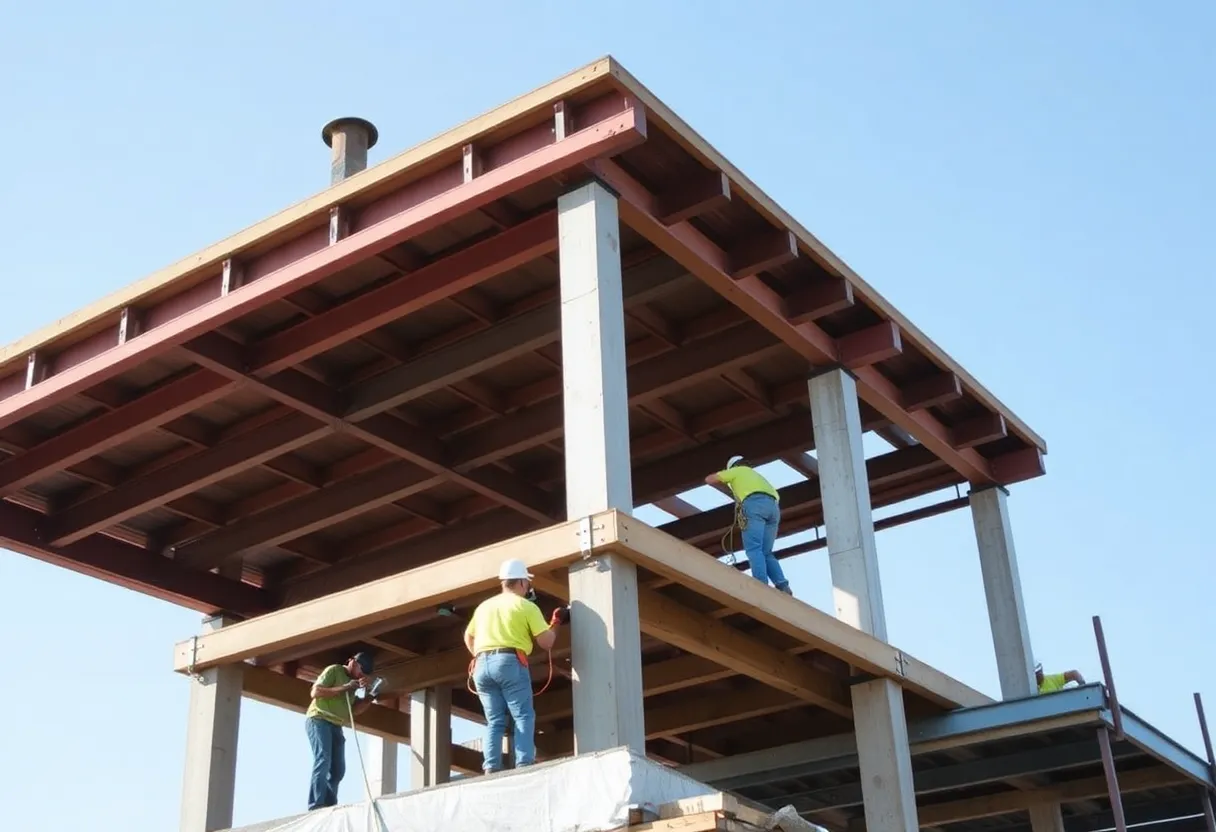News Summary
In Sabah, Malaysia, the construction and infrastructure sectors are evolving through the adoption of Building Information Modelling (BIM). Government initiatives like Construction 4.0 and the SMJ 2.0 plan are promoting digital practices among small engineering firms to enhance project efficiency and sustainability. Challenges such as high costs and limited training resources exist, but strategic recommendations aim to foster BIM adoption and support the region’s sustainable infrastructure development. Educational initiatives are also being launched to prepare the future workforce in this growing field.
Sabah’s Infrastructure Transformation: The Role of Building Information Modelling (BIM)
The construction and infrastructure sectors in Malaysia, particularly in Sabah, are undergoing a significant transformation fueled by government initiatives aimed at encouraging modern practices. The adoption of Building Information Modelling (BIM) signifies a crucial step toward sustainable development, fostering efficiency and innovation in small engineering firms across the region.
Government Initiatives Fuel BIM Adoption
Key strategies such as the Construction 4.0 by the Construction Industry Development Board (CIDB), the BIM roadmap by the Public Works Department (JKR), and the Construction Industry Transformation Programme (CITP) are driving this movement. These initiatives lay the groundwork for enhancing the construction industry through advanced technologies, with BIM serving as a central component to achieve modernized infrastructure and sustainable urban planning.
SMJ 2.0 Plan: A Vision for Sustainable Development
The SMJ 2.0 plan emphasizes integrated planning and modernized infrastructure to support sustainable growth in Sabah. As part of this vision, small-scale engineering consultants are invited to embrace digital tools that enhance project efficiency, transparency, and coordination among teams. This transition to digital practices is crucial for meeting modern societal demands.
Understanding BIM: A Digital Approach to Construction
BIM can be described as a process for creating and managing digital representations of the physical and functional characteristics of buildings and infrastructure. Key capabilities of BIM include:
- 3D visualization of structural and system components
- 4D integration with scheduling and 5D cost estimation
- Coordination across disciplines via shared platforms
- Future integration with operation and maintenance systems (6D/7D)
This innovative approach fosters real-time collaboration among architects, engineers, contractors, and clients, effectively minimizing design conflicts and improving decision-making throughout project phases.
Core Pillars of the SMJ 2.0 Blueprint
The SMJ 2.0 blueprint is structured around three essential pillars:
- Sustainable Economic Development: BIM enhances project efficiency and cost control, leading to better productivity and resource use.
- Human Capital Empowerment: The utilization of BIM spurs upskilling in digital engineering and project management, preparing the workforce for future challenges.
- Green and Resilient Infrastructure: BIM supports simulations and assessments for sustainable design, aligning with the goals for environmental protection and resilience.
Challenges for Small Engineering Firms
Despite the clear advantages of BIM, small engineering firms in Sabah face several challenges: high initial costs for software and hardware, a shortage of trained BIM professionals, limited access to local training resources, and resistance to change in processes. Furthermore, there is often a limited demand for BIM in smaller projects, making it harder for firms to adopt this technology.
Strategic Recommendations for Enhanced Adoption
To overcome these obstacles and improve BIM adoption, strategic recommendations include:
- Government incentives such as digitalization grants and tax rebates for small and medium enterprises (SMEs).
- A phased approach to BIM implementation starting with basic 3D modeling and gradually integrating 4D and 5D functionalities.
- Upskilling programs for workers through certifications and collaborations with software vendors.
Supporting Sustainable Infrastructure Development
By leveraging BIM, Sabah can facilitate sustainable infrastructure development which includes energy simulations, optimal material utilization, lifecycle costing, and disaster resilience design principles. Notably, the Pan Borneo Highway project in Sarawak serves as a benchmark for BIM adoption in Malaysia, employing integrated software platforms for effective project delivery.
Educational Initiatives to Foster BIM Knowledge
In support of these initiatives, a BIM laboratory will be established at Universiti Malaysia Sabah (UMS) to provide education and training in BIM technologies. This step is part of a larger Industry Collaboration Programme aimed at bolstering local industry growth and enhancing the marketability of graduates.
Conclusion: Collaborative Efforts for Success
The successful adoption of BIM is contingent upon collaborative efforts from government bodies and industry partners. Addressing the existing barriers will ensure that small firms can leverage BIM principles to gain a competitive edge and further enhance sustainable development in Sabah’s construction landscape.
Deeper Dive: News & Info About This Topic
Additional Resources
- Borneo Post: Small Engineering Firms Can Leverage BIM for SMJ 2.0 Success
- Wikipedia: Building Information Modeling
- Borneo Post: UMS to Have Building Information Modeling Lab
- Autodesk: BIM in Asia – Highway
- Daily Sabah: Turkish Retailer BIM Sells 35% Share in Moroccan Branch for $832M
- Google Search: Building Information Modeling
Author: Construction FL News
The FLORIDA STAFF WRITER represents the experienced team at constructionflnews.com, your go-to source for actionable local news and information in Florida and beyond. Specializing in "news you can use," we cover essential topics like product reviews for personal and business needs, local business directories, politics, real estate trends, neighborhood insights, and state news affecting the area—with deep expertise drawn from years of dedicated reporting and strong community input, including local press releases and business updates. We deliver top reporting on high-value events such as the Florida Build Expo, major infrastructure projects, and advancements in construction technology showcases. Our coverage extends to key organizations like the Associated Builders and Contractors of Florida and the Florida Home Builders Association, plus leading businesses in construction and legal services that power the local economy such as CMiC Global and Shutts & Bowen LLP. As part of the broader network, including constructioncanews.com, constructionnynews.com, and constructiontxnews.com, we provide comprehensive, credible insights into the dynamic construction landscape across multiple states.





